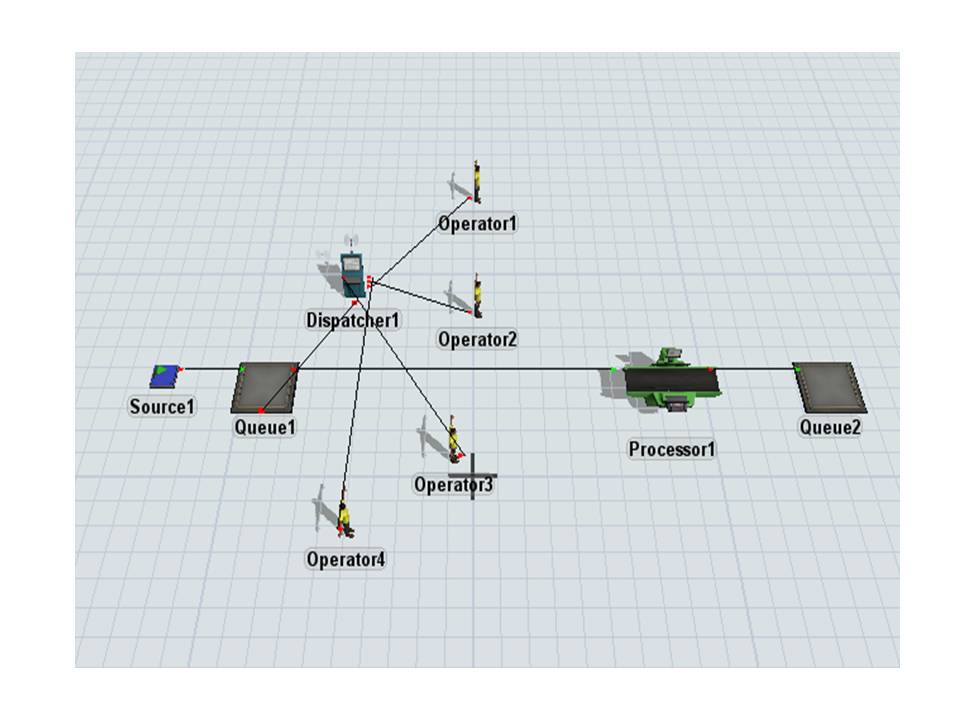
currently I am working similar to this model having operators and queues. I am trying to create a new dispatcher logic based on shortest distance. But in my logic the shortest distance should be between processor 1 (in diagram) and the operators unlike the conventional way(ie.shortest distance between source/queue and operators).can anyone please suggest how to code this new logic
